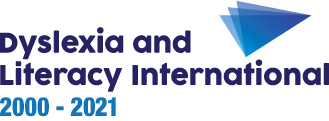Formal diagnosis by specialists
After your own informal screening, if you feel that the child would benefit from a formal diagnosis, you should discuss the matter sensitively with the parents, explaining that the more precisely you understand the child’s learning difficulties the better you will be able to teach him or her.
Listen to a specialist describing the formal diagnosis:
In many countries, the official diagnostic procedure is assigned to educational psychologists or professionals who alone are licensed to use a series of specific and similar, standardised tests and have received specific training to interpret test results.
Usually this has to be paid for privately by the parents or guardians although in some countries health and social security provision may cover the costs.
Authentic tests used by educational psychologists will be standardised. Standardised tests are those which have been administered to large and representative samples of children for various specified age ranges. The results from the different age groups are summarized and analysed in order to provide indications of the level of performance expected for each specific age, as well as of the level of deviation from that performance which is considered to be normal or not.
Generally, standardised tests use two statistical notions to compare the child’s performance with the performance of children of the same age – the percentile and the standard deviation.
Percentile
The percentile is one of the 99 values which divide a series of results into 100 categories with the same number of observations, or approximately. Imagine that a test has been carried out on 700 pupils of any age, randomly chosen. The results – values – are then tabulated in one hundred blocks each of seven. Each block corresponds to a percentile. The bigger number of students the bigger each block is and therefore all the blocks are more representative of the whole population. The values of a level of performance for each percentile are then recorded.

When a pupil is tested, the value found for the test result is looked up to find in which percentile this value falls. Usually, we do not go into each percentile and instead use 25, 50 and 75 percentile markers to make four bigger blocks (0-25, 25-50, 50-75, 75-100). For example, if a child falls into the 25th percentile this means that 75% of the pupils of the same age from the standardized sample have obtained a score equal to or superior to the value obtained by that child.
It is generally thought that when a pupil falls under the 10th percentile, which means that his or her performance is inferior to 90% of pupils of the same age for that test, the teacher should be alerted.
Standard deviation
The deviation is a statistical measure for the variation around a mean value. In tests which measure reading and writing abilities it is thought that generally the individual results are dispersed either side around a mean and fall under a bell-shaped curve (see below).

Intervals can be described on either side of the mean and are called standard deviations. A standard deviation of – 1 to + 1 represents 68% of the population. A standard deviation of – 2 to + 2 will include 95% of the population.
There is no unanimity about whether falling outside one or two standard deviations signals a worrying result. We think that the first is more appropriate. But what is most important is that you interpret these tests with their statistical values along with other types of assessment, before arriving at a hasty judgment.


